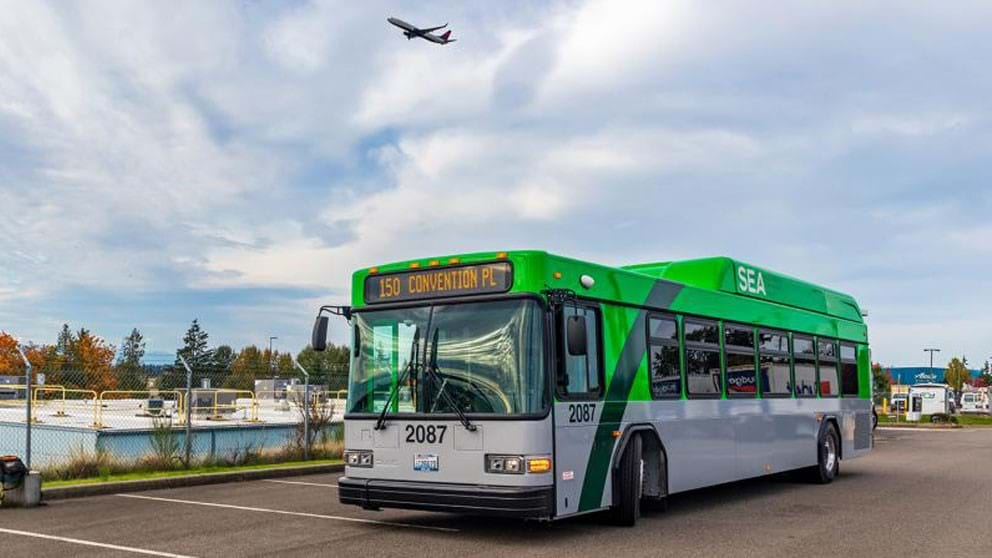
Port of Seattle nears its goal of slashing its GHG emissions in half
The latest annual inventory of greenhouse gas (GHG) emissions prepared by the Port of Seattle relates a 46% reduction in emissions from the port’s own or controlled operations in 2021 as compared to its 2005 baseline. The reduction puts the port close to its ambitious goal of cutting its emissions by half by 2030.
Major progress is attributed to the port’s Aviation Division. By purchasing renewable natural gas produced from landfill waste, the Aviation Division achieved a huge emissions reduction and became the first major operating division to meet the port’s goal.
The two per cent decrease by the port’s Maritime and Economic Development Division in 2021 is also a positive development in that emissions had still been on the rise prior to the pandemic. While the pandemic led to lower gasoline consumption, the 41% decrease in GHG emissions from vehicles and marine equipment is in good part due to the use of renewable diesel.
Port of Seattle Commissioner Ryan Calkins is optimistic about other major strides towards zero carbon being made with the Clean Fuel Standard taking effect in the State of Washington next year. He also noted that the port continues to push for large-scale transformative sources of energy such as green hydrogen, wind power, and sustainable aviation fuels, and the recently passed Inflation Reduction Act should help to fund some initiatives.
Changes sought over the next decade include the electrification of all port vehicles, more shore power solutions, and a clean energy strategy for the entire Seattle waterfront.
The port aims to eliminate carbon emissions from all of its owned or controlled sources by 2040 and to have all entities operating within its facilities achieve carbon neutrality or better by 2050.
Read the annual greenhouse gas emissions inventory to learn more.